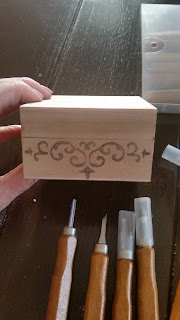LINO PRINT A&S Class
LINO PRINTING by Symonne de la Croix (Corina Graham) 26.2.21 Though lino printing is not period, it is a great stepping stone to learning other period techniques such as Durer style WOOD CUTS, WOOD BLOCK PRINTING on fabric and basic WOOD CARVING. LINOLEUM commonly shortened to Lino was invented by a Scot, Sir Frederick Walton in 1860. Lino is made with ingredients such as oxidised linseed oil mixed with cork dust, sawdust, pine resin, gums, pigments and fillers such as calcium carbonate on a burlap or canvas base. Materials: Lino 10 x 14cm Etch...





